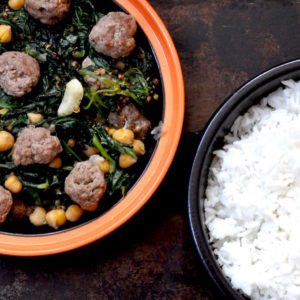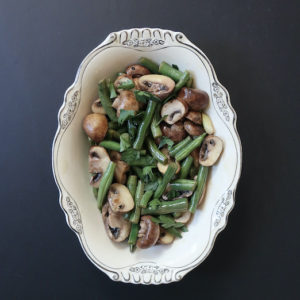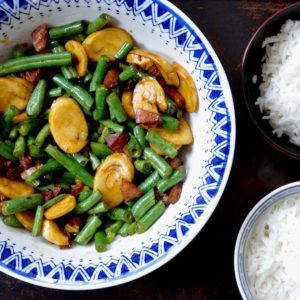Hummus
A month of silence, and your hostess returns with a recipe that’s simultaneously controversial and lacking in originality. Like you’ve never made hummus before.

Seriously, recent events have left me speechless. What was I going to do? Hop online, write a few trite sentences about Black Lives Matter, and start wittering about summer fruits?
I don’t know about you, but the Pandemic, George Floyd’s death, and the President’s shockingly callous response to both left me literally ill. My blood pressure soared, my weight dropped, my head pounded with migraine. Night terrors plague my sleep.

Atop all this, Lucy, our kitty, suffered a recurrence of cancer. She died on Memorial Day.
For those readers who have not spent their lockdown Marie Kondoing their basements, scouring their attics, or organizing sock their drawers:
You are not alone.

So, hummus. It is an abrupt place to resume, but it’s as good a place as any.

You will notice the portion is small. My appetite is nearly nonexistent right now, and John is not a hummus eater. The recipe is easily scaled up. Have at it.

My instagram friends taught me these are called Hydrangeas.
The world abounds in hummus recipes, and in people arguing about why their hummus recipe is best. I have neither the energy nor inclination to argue about chickpeas. In times good and terrible I turn to Paula Wolfert for all things food, and one thing nobody is arguing about: this is not a good time.

Nor is this recipe precisely Paula Wolfert’s (there’s a mouthful), using as it does canned chickpeas, which are not peeled. Deep down in its bones, however, this recipe is a Paula, coming from the lovely Clay Pot Cooking, purchased from the College Avenue branch of Pegasus Bookstore in Oakland, California, on a sunny summer day, in better times.
They will come again.

Thank you for reading.
Hummus
Please read notes before starting to cook.
adapted from Paula Wolfert’s Clay Pot Cooking
Yield: approximately 1/3 cup/75 grams; recipe is easily scaled upward
Preparation time: about 15 minutes
4 ounces/100 grams cooked chickpeas (see notes)
1 tablespoon tahini
1 tablespoon fresh lemon juice, with more to season
fresh garlic to taste; I used one large clove
flaky sea salt
1-3 tablespoons olive oil
a little water, to loosen the finished dish
to finish, your preference: sumac, paprika, hot red pepper flakes, cumin, pine nuts
Instructions
You will need a blender, stick blender, or food processor to make hummus. I used a small food processor.
Tip the chickpeas into a bowl or colander and rinse them well. Some people like to reserve the aquafaba to loosen the hummus, but I can’t stand the stuff, and prefer using water with olive oil.
Set the rinsed chickpeas aside.
Time to do battle with the tahini. Take a sturdy fork and stir vigorously, wrestling the stuff into submission. Once the tahini is well blended, place a tablespoon of tahini into the blending vessel of choice, then take a moment to mop tahini off your clothing, body, and wherever else it splattered. (Please tell me it’s not just me.).
Add the garlic to the tahini, along with the tablespoon of lemon and pinch of salt. Blend everything until the mixture coheres, about two minutes. Push it down with a spatula, if necessary.
Add the chickpeas. Blend. You may need to add liquid; this is where some go for the aquafaba. I added more olive oil with water. Taste and use your judgement. Add lemon if you wish. I wished. Also taste for salt.
Be careful about garlic: it will get stronger as the hummus sits.
Blend until the hummus is a creamy paste. Taste again for seasoning, adding any or none of the suggested spices.
Scrape into a low, wide bowl and leave out at room temperature to mellow before serving.
I love hummus with pita, but other people eat it with healthy things like raw vegetables, more tahini, eggplant, and cooked red pepper.
Any leftover hummus may be covered and refrigerated, bearing in mind that garlic becomes stronger with time.
Notes:
This recipe uses canned chickpeas. The better your peas, the better your hummus. Many consider this heretical, but we’re not going there today. If you have the energy to soak dried chickpeas, cook them, peel them, and make hummus from scratch, more power to you. Go for it.
If, like me, you use only part of a can of cooked chickpeas for hummus, the remainder may be used in a salad, or pasta. I used the remainder that evening with dinner, tossing it into the vegetables. I got no objections.
According to Sarit Packer and Itamar Srulovich, the team behind the Honey&Co cookbook/restaurant empire, tahini should be kept in the pantry, not the refrigerator. This makes it much easier to work with.
Use your best olive oil here. With so few ingredients, you taste everything.
Another of the many arguments surrounding hummus is what to put in it–or not. Wolfert suggests topping it with a few whole reserved chickpeas, cumin, hot red pepper flakes, and flaky sea salt. David Lebovitz, who gives a recipe in My Paris Kitchen, suggests sumac, which I love and could not resist. As Fergus Henderson says, though not about hummus, express yourself.





